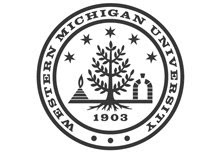Winners of the Engineering Graphics/CADKey Competition, offered to students enrolled in IME 1420 Engineering Graphics classes during Spring 2005, were announced last week in a lecture class led by IME professor Slobodan Urdarevik, who organizes the competitions.
The first-place winner is Justin Hobart, a sophomore in electrical engineering who has already completed an internship with an automotive plant in Oscoda, his hometown, and whose background includes two high school CAD classes. His goal is to put his CAD skills to work in his future career. He described the three-hour competition as “fun.”
Izuan Hazarul, a junior in mechanical engineering who transferred to WMU from Malaysia, earned second-place honors. His career goal is a position in vehicle dynamics in the automotive industry. The Spring IME 1420 has been his only CAD class, so his winning was a surprise. “It was my first experience with computer drawing, so I really didn’t know if I was good enough” he said.
Third place went to Josh Gress, a sophomore majoring in industrial technology and secondary education who plans to be a high school teacher. His experience included four years of CAD classes at Byron Center High School before coming to WMU.
Standing in front of the winning entry of the Engineering Graphics/CADKey Competition are the winners: (left to right) Josh Gress, 3rd, Justin Hobart, 1st, and Izuan Hazarul, 2nd
IME Chair Dr. Paul Engelmann congratulated the winners and encouraged students in the audience – all members of the Fall 2005 IME 1420 class – to take part in this semester’s competition.
“These guys have done a great job, and maybe the next winner is right here in this room. All of you are headed into disciplines that will require you to use graphics in your careers,” Engelmann said. “This competition allows us to give students recognition for going above and beyond, and it gives those who win a leg up on the competition when they talk to recruiters who want to know what they have done beyond the classroom.”
For the three-hour competition, students were given “a very complicated drawing,” Urdarevik said. “The requirements were to create a 3-D solid model of the part shown on the drawing and to create a layout with the number of views necessary to manufacture the part plus an isometric view with symbols.”
All three winners received engraved plaques acknowledging their accomplishments. The first-place winner also received a $100 certificate. Prizes for the competition were provided by Kubotek (formerly known as CADKey), CIM Solutions, and the IME Department.
Urdarevik plans a similar competition on Saturday, Dec. 10, for the 330 students presently enrolled in IME 1420. Students competing in the Fall 2005 Engineering Graphics Competition will be using AutoCAD, which was introduced this semester.
Urdarevik joined the IME faculty three years ago after teaching eight years at Humber College in Toronto. He earned his master’s degree in mechanical engineering at the University of Skopje in Macedonia.








